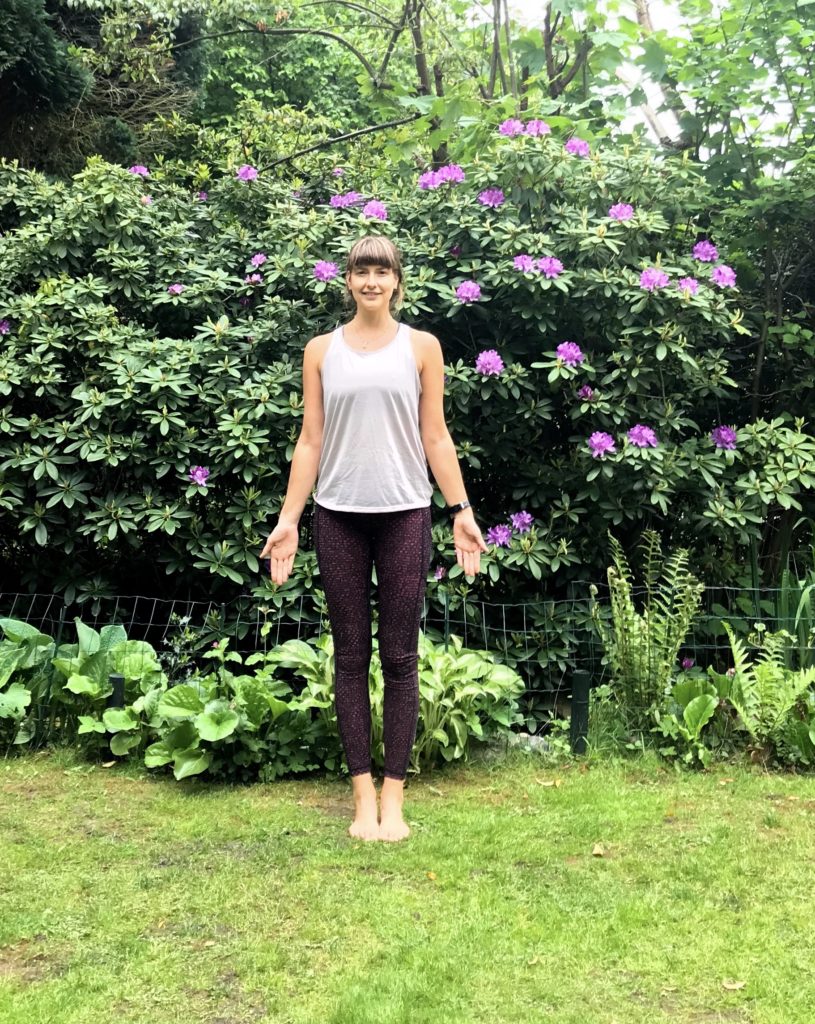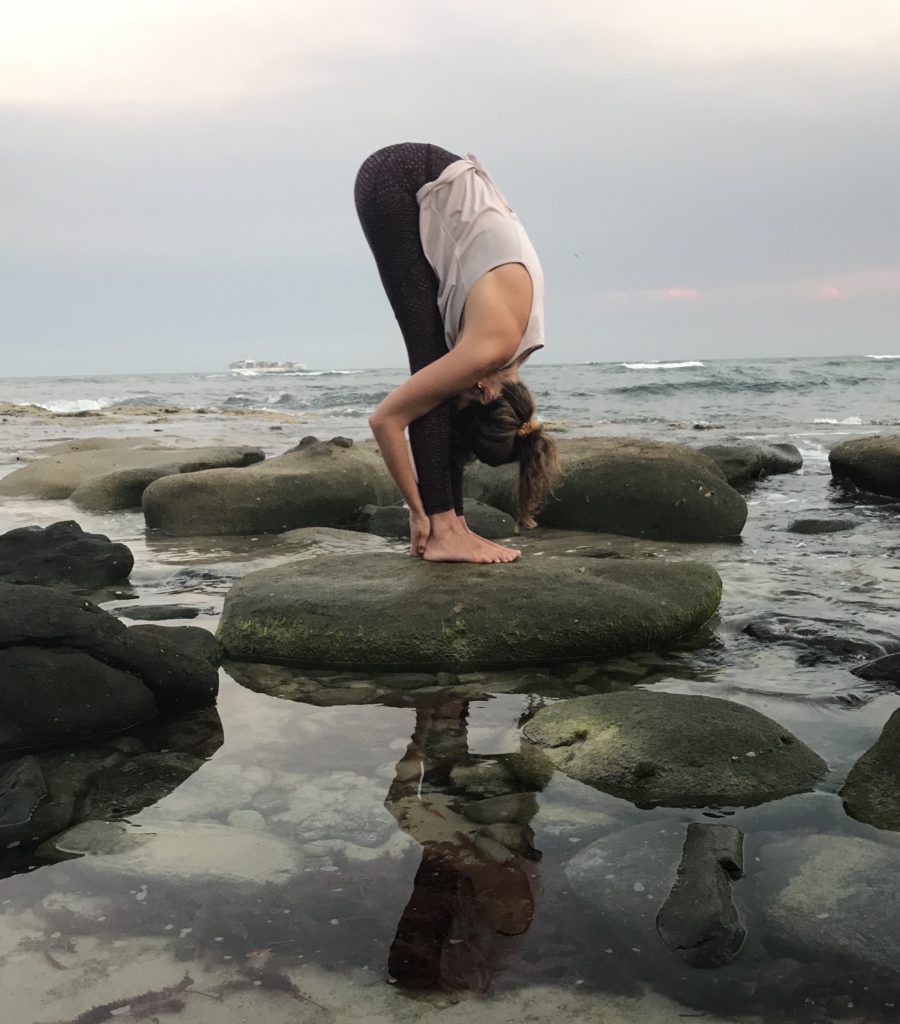The foundations of yoga: An introduction to yoga
It is not a surprise that I start my very first blog with an introduction to yoga. One of the key things I want to get out into the world is that yoga is for everybody. Just like Krishnamacharya used to say:
‘If you can breathe, you can do yoga’
The ‘real’ yoga is so close to my heart and I want the whole world to know what yoga is really about. I can hear you guys think: It is her first blog, ‘the whole world?’. I know, a bit rash to think many people are going to read this but hey, we all have to start somewhere, right?
Yoga Asana
When we hear the word ‘yoga’, we mostly think of the physical practice. People standing on their head and all that jazz. But this is just one part of yoga, called yoga asana. Asana is translated from Sanskrit as ‘posture’. If you pay some attention when a yoga teacher is using the Sanskrit words for the poses in a yoga class, you will notice that the name often ends with ‘asana’. For example: Tadasana (mountain pose) or Uttanasana (standing forward bend).

Tadasana (mountain pose)

Uttanasana (standing forward bend)
Hearing those Sanskrit words may sound intimidating but as you can see, it is not that complicated. Besides yoga asana, yoga encompasses much more than only the physical side. Let’s dive a bit deeper into the world of yoga.
An exercise for body & mind
Yoga is a body and mind practice with over 5000 years of history in ancient Indian philosophy, and focusses on bringing harmony between mind and body. The word ‘yoga’ is derived from the Sanskrit root ‘Yuj’ meaning ‘to join’ or ‘to unite’. Yoga is the union of the body and mind. We often see our body and mind as separate from each other but have you ever felt so nervous, that you felt it in your stomach? It is even scientifically proven that stress (which happens in the mind) affects the production of certain hormones in the body.
Unite
With ‘unite’, yoga also means the union between the individual consciousness and the universal consciousness. This is a bit of a complex idea and it is hard to convey into a simple and short answer, but I will try to cut it short: individual consciousness is the subjective experience of our own bodies and our own mind. How we experience our world through our brain, it’s the state of ‘being aware’. But there is also the spiritual meaning of consciousness, the universal consciousness.
An expanded state of awareness
You might know the famous words ‘we are one’, meaning there is an underlying essence in all beings. Albert Einstein told us that ‘everything is energy’ and that ‘a human being is part of the whole called by us the universe’. So even in science the universal consciousness is being used and it goes by many names: The quantum Mind or the universal mind. Or in more religious practices its Jehovah, Allah or God to mention but a few. Universal consciousness is an expanded state of awareness.
Connect with the world around you
Yoga brings us back from only being aware of ourselves, to being able to see the bigger picture. To see that we are all connected with other people, animals and with nature, with the whole universe. Yoga is both an exercise for the body as well as for the mind. It is an ancient wisdom for a healthier, happier and more peaceful way of living which will bring a sense of deep understanding of yourself and the world around you.
Yoga is for every body
In modern days it is so easy to become overwhelmed and confused of who we are and what we want in life. Yoga practice can help us to stay centred and the beauty of yoga is that you don’t have to be able to stand on your head to achieve that inner peace. Whether you are young or old, stiff or over flexible, yoga is for every body and everybody!
The yoga happiness program
The traditional purpose of yoga asana is not exercise or fitness. Asana’s were practiced to prepare the body and mind for meditation. Sitting still for hours on end is much easier when the body is supple and the mind calm. Yoga poses have positive effects on our muscles, connecting tissue and skeleton, as well as our organs and more subtle parts like our nervous system. The more we practice yoga, the more layers of yoga we will understand. While at first it might be just a physical practice, later on you will notice changes on a mental emotional and energetic level.
Your body & mind are like an onion
Our bodies and minds are like an onion, with all different layers and through yoga we learn to understand our body & mind one layer at a time. So the essence of yoga is much more than the postures. Classical yoga connects back to Patanjali, known as the ‘father’ of yoga. In his book; ‘the yoga sutra’s’ he writes down the philosophy of yoga.
The eight limbs of yoga
Patanjali explains the internal workings of the mind and gives an eight stage plan on how to live a meaningful and purposeful life. The eightfold path is called Ashtanga, which literally means ‘eight limbs’. No element is better than the other and each limb has its own holistic importance to help us find that connection to our inner core, to our true self. The yoga sutra’s act like an compass, showing the direction of a happy and healthy life.
In short the eight limbs of yoga are as follows:
- Yama: Universal ethics, codes of conduct.
- Niyama: personal ethics.
- Asana: body postures.
- Pranayama: breathing exercises and control of breath.
- Pratyahara: control and withdrawal of the senses.
- Dharana: concentration and cultivating inner awareness of the present moment.
- Dhyana: Devotion & meditation.
- Samadhi: union, with the divine, eternal bliss.
As you can see, yoga is a complete system and asana is a small, yet very useful part of the whole. So when you meditate; you do yoga. When you practice Ahimsa, which is part of the Yama’s meaning non harm, you do yoga. When you check in with your breath, You do yoga. When you carve out time to do self-study? as you can guess by now, that is also yoga. If you’re interested in reading the yoga sutras I highly recommend reading ‘The Yoga Sutras of Patanjali from Sri Swami Satchidananda. Do you want to take a look at them right now? Here is a link to the Sutras with commentary of Swami Vivekananda http://www.hinduonline.co/DigitalLibrary/SmallBooks/PatanjaliYogaSutraSwamiVivekanandaSanEng.pdf
Meditation for monkey minds
This is why yoga is for everybody. Because doing yoga encompasses much more than just the physical practice. People whose minds are naturally already calm might not need a strong focus on the physical aspect of yoga, but people with monkey minds (like me) can benefit a lot from doing yoga before meditation to create a calm mind. You do what feels good for you! And if you’re only practicing yoga Asana (which is totally ok) you might, at some point, want to explore more of the eight limbs to dive deeper into the world of yoga.
Start and discover yoga
As you can see these eight limbs – the traditional practice of yoga – includes every aspect of life, with its aim to reach the complete stilling of the mind, to reach self-realization. If you’re new to yoga these words might sound very foreign. But don’t worry, you don’t have to learn the Sutra’s one by one. It just shows that yoga is much more than the postures. You are not a yogi by merely being able to stand on your head.
Easily grow in to yoga
My advice is to just not think too much about it, but continue with your practice and gradually you will come to understand the yoga sutra’s. When I started yoga I didn’t have a clue about the yoga philosophy. I tried to read the yoga sutra’s before heading into my teacher training but it was hard to grasp the whole thing at once but gradually over time I started to understand more and more. Just give it time and things start to make sense naturally.
A lot to discover
The more I study yoga, the more I see how incredibly vast it is. There is an infinite amount to learn. Every time you can peel a different layer of the onion and life starts to make more sense. You will learn yourself better every time you show up on your mat. Yoga is a way of living dedicated to creating a union between body, mind and spirit and can be practiced in everything we do in our daily lives.
Benefits such as patience, compassion and self-knowledge
What you learn on the mat, you can take with you, all day, every day. For example; patience. That is the first thing that comes up to mind as I’m writing this. I used to be so impatient and these days when I pick the wrong line (as usual) in the supermarket I barely even notice it. I also have a lot more patience with myself. Which brings me to self-compassion and overall compassion. I’ve always been an compassioned person but not so much with myself. Through yoga I’ve learned to love myself more. It is easier to love something if you understand it, right? Through yoga and the knowledge that I’ve gained of myself I learned to love myself more. These are just a few examples of how yoga enriched my life. Yoga is a lifestyle and with coming to your mat regularly you will learn to explore your all the layers of yourself, of who you are.
A little yoga goes a long way
Even a little yoga goes a long way and can change the way we feel in our body’s an in our minds. Just take a deep breath and start to notice what happens. Want to join my classes? visit https://petrianne.yoga/yoga/
Namasté, beautiful people
Amazing! Looking forward to attend your class one day ?